| 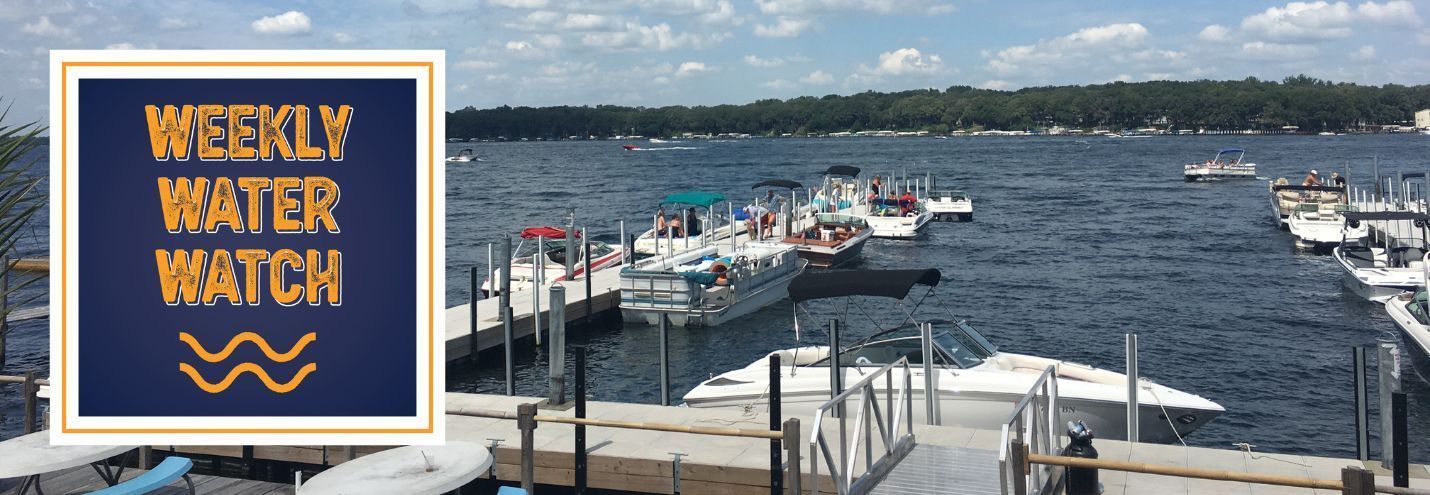 | | 1 Beach with an E. coli Advisory:
Lower Pine Lake Beach (Eldora, Hardin County, IA)* 2 City and County Beaches exceed the state’s advisory threshold for E. coli.*
View the map on our website to see where they are. Note: Saylorville’s Oak Grove Beach is still closed due to high water. Monitoring has been suspended for the 2024 season at Lake Keomah due to renovation activities. *Data from the Iowa DNR State Park Beach Monitoring Program |
| IEC's new book Sacrifice State releases this week! |
| Today, IEC is releasing our first ever book in collaboration with Drake University's Drake Community Press (DCP). Over the past few years, IEC and DCP faculty and students partnered to examine environmental issues by meeting and interviewing Iowans throughout the state. This book – Sacrifice State: Iowa Voices on Environment and Justice – speaks to the current and amplifying issues of environmental conditions in the state, while highlighting the unique beliefs and experiences of those who were interviewed. This collaboration brought forth guided conversations about how to address a complex societal problem alongside a changing environment. The interviews are showcased in the books in 12 thoughtful chapters pertaining to Iowa's environment. Artwork from Madai Taylor, a mixed-medium artist residing in Fort Dodge, are displayed at the beginning of each chapter. Taylor's collection, When the Earth Cries, explores the fundamental, enigmatic themes of human rights, connection, and personal growth. The pieces showcased in this book use soil samples from across the state, signifying the interviewees' connections to Iowa's land, their ancestral roots, and their impacts on the natural environment. Despite the diverse and sometimes conflicting opinions and beliefs in this book, we hope it leaves an impression of unity, as the underlying environmental conditions affect us all. We acknowledge that this book cannot possibly grasp the true diversity of this state, but we believe it still captures the array of challenges, tensions, triumphs, and dreams of those interviewed. In addition to supporting our ongoing advocacy and outreach work, IEC will donate 5% of proceeds generated by book donations to two Iowa organizations committed to environmental justice: Johnson County-based United Action for Youth, whose SPARK! program provides active engagement for youth to help them find their passion and prioritizes opportunities for youth facing barriers to participation in activities that spark their interest such as youth of color, LGBTQ+, and/or low socioeconomic status; and the Honor Native Land Fund, which supports the Land Back initiative of the Indigenous-led Great Plains Action Society, a campaign to acquire land in Iowa for activities such as Native urban gardening, reclaiming first foods, and reMatriating prairie in Iowa. Sacrifice State is now available on IEC's website for a $35 donation. Books can be picked up at IEC's office in Des Moines, at our Green Soiree event tonight, or shipped to your home directly. For questions, to discuss carrying the book in your local bookstore, to request a book for a local library, or other ideas, please contact Sarah Howe at howe@iaenvironment.org. |
| |
|
| |  | | 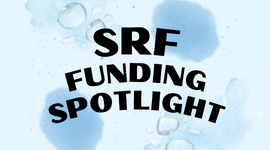 | Clean Water SRF Offering 0% Interest Loans for Nonpoint Source Projects Starting in early 2025 the Clean Water State Revolving Fund (SRF) plans to offer 0% interest loans up to $500,000 to public entities for construction of nonpoint source (NPS) projects to address stormwater and other sources of NPS pollution. The NPS special purpose incentive will accept the first round of applications from September 1 to December 1, 2024. Funds will be awarded through a competitive application process. Nonpoint source projects that meet a minimum score will be eligible for a 0% interest loan (plus 0.25% servicing fee) up to $500,000. For projects greater than $500,000, costs in excess of the amount eligible for 0% funding can be funded at the current SRF interest rate posted at www.IowaSRF.com. The Environmental Protection Commission will vote on program details in the Intended Use Plan at its meeting next week. The commission is expected to approve the plan. Public comments on the Special Purpose Incentive Funding opportunity will be accepted through July 5, 2024 via email to srf-pc@dnr.iowa.gov. For more information or to schedule a presentation at a community or watershed group meeting, contact SRF nonpoint source program manager, Julie Kelso, at srf@dnr.iowa.gov. |
|
|
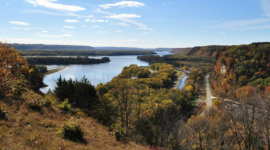 | Upper Mississippi Refuge Celebrates the Centennial This month, we celebrate the Upper Mississippi River National Wildlife and Fish Refuge 100th anniversary. In 1924, the Refuge was created to provide hundreds of uninterrupted miles of protected landscape. This includes habitat for threatened species, recreational paths for visitors, and vital ecological resources like flood control. The entire refuge, spanning 261 river miles and more than 240,000 acres of surrounding floodplain, is also designated as a Wetland of International Importance and a Globally Important Bird Area. The Upper Mississippi Wildlife Refuge is federally protected, but it still suffers threats from climate change, nearby polluters, and invasive species. Habitat degradation poses a serious threat to the fish and wildlife that rely on the Refuge. Challenges like prolonged droughts, seasonal flooding, agricultural runoff, PFAS, and road salts all have detrimental effects to the landscape. To help the Refuge maintain and protect their ecosystem, they received $10 million from the Inflation Reduction Act. These funds will help support the Refuge strengthen climate resiliency. To celebrate the Centennial, the Refuge is also drumming up more volunteer and engagement opportunities for advocates along the Mississippi from Minnesota, Wisconsin, Illinois, and Iowa. View the Upper Mississippi River National Wildlife and Fish Refuge website to learn more about ways to get involved. | |
|
|
 | Spring Flush of Pollution Seen in Nitrate Watch Data April showers bring… polluted runoff? Unfortunately, this is the case in many parts of the United States. The results can be dangerous. Waterways often see peak nitrate concentrations in the spring. Nitrate, a compound created when nitrogen-rich fertilizers, manure, and sewage move through the environment, has catastrophic effects on natural systems. Eutrophication, fish kills, and algal blooms are some of the symptoms of nitrate pollution in surface waters. Nitrate can also be dangerous when we consume it in our drinking water: it can lead to medical conditions including blue baby syndrome, thyroid disease, and cancers. In agricultural areas like the American Midwest, fertilizer is applied to fields in the spring and, in some areas, in the fall. The nitrogen in this fertilizer can then follow one of three paths: it can be taken up by crops, it can be lost to surface runoff or groundwater percolation, or it can end up sequestered in the soil. The influx of nitrate delivered to streams in the spring comes from a combination of runoff and sequestration. Spring rains pick up nitrogen from newly applied fertilizer, while also mobilizing nitrogen that has laid in wait in the soil. All of this gets carried off to nearby waterways, where it can wreak havoc as nitrate. Continue reading the blog on the Izaak Walton League of America's website. |
|
|
| | 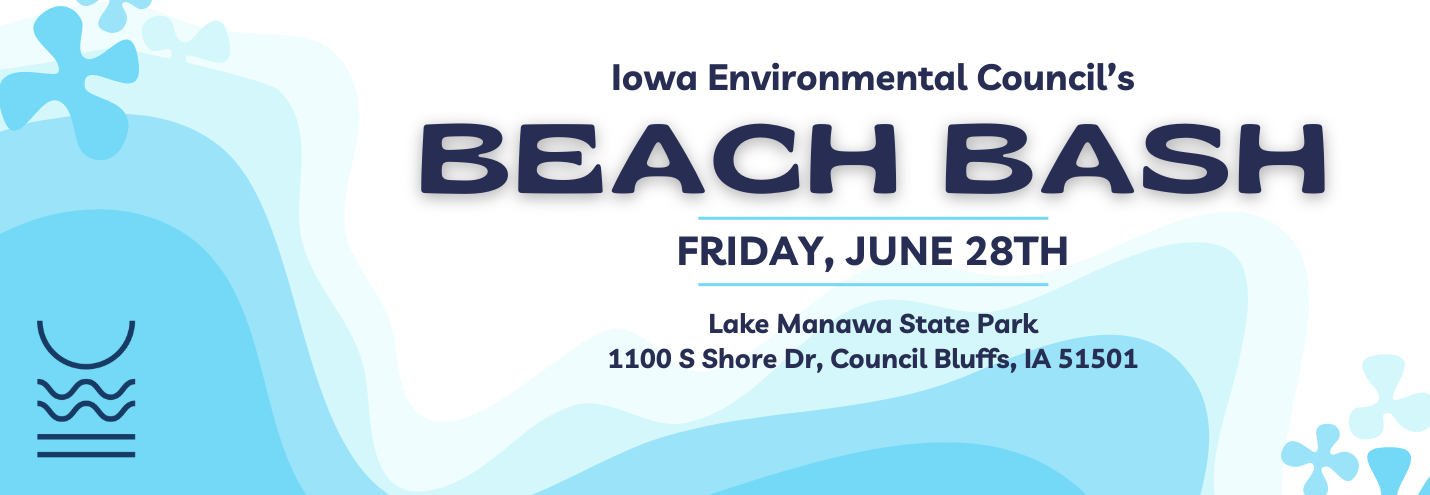 | | What's new in Iowa's water news: |
|
|
| | | 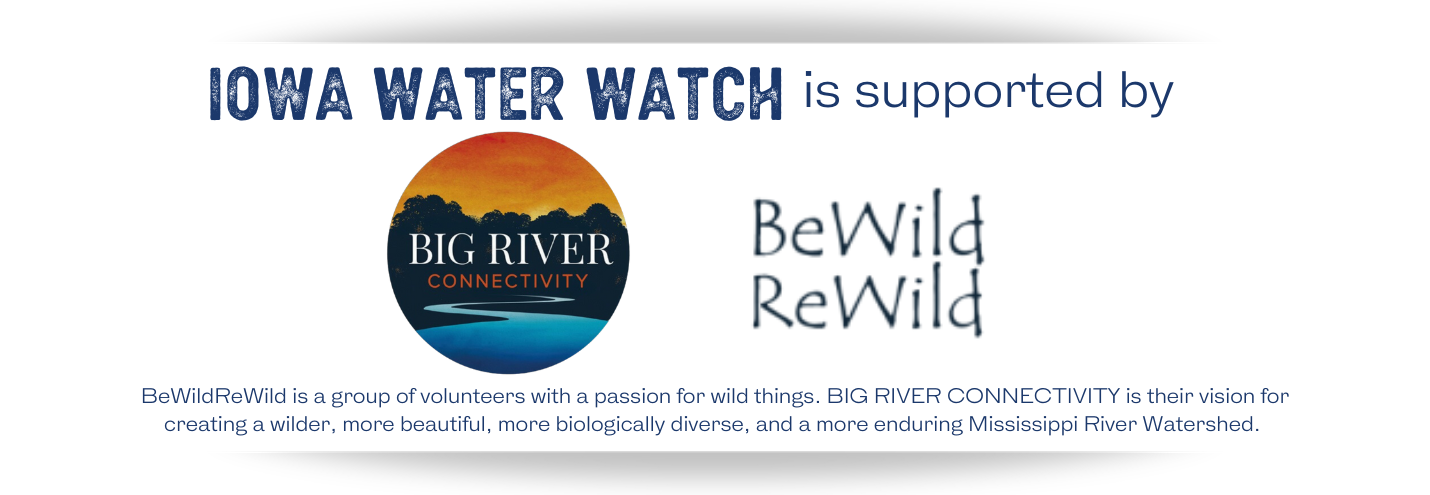 | | | Iowa Environmental Council
505 Fifth Ave., Suite 850
Des Moines, Iowa 50309-2317
515-244-1194 | iecmail@iaenvironment.org |
|
|
|
|
|